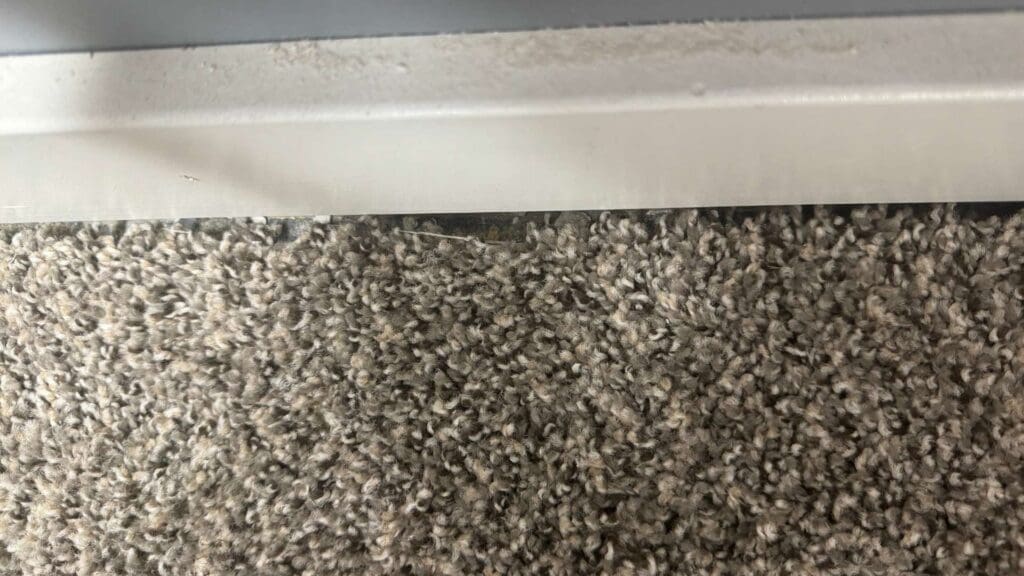When and when you cannot get carpet stretched? Carpet stretching is a crucial maintenance task that prevents trip hazards, restores the appeal of your carpet, and covers exposed tack strips. Understanding its importance and the proper techniques can extend the life of your carpet and enhance your home’s safety and aesthetics.
Why is Carpet Stretching Important?
Avoid Hazardous Trip Potentials
Carpet stretching helps to eliminate wrinkles, ripples, and bulges that can develop over time due to regular use. These uneven areas can pose significant trip hazards, especially in high-traffic areas of your home. Ensuring your carpet is stretched and flat minimizes these risks, creating a safer environment for everyone.
Restore the Appeal of the Carpet
A well-stretched carpet significantly enhances the aesthetic appeal of any room. Wrinkled or bunched-up carpets can make a space look untidy and neglected. Stretching the carpet smoothens out these imperfections, restoring its original look and making your home more visually pleasing. This is particularly important if you are planning to sell your home, as a well-maintained carpet can increase the overall value of your property.
Cover Exposed Tack Strips
Tack strips, used to secure the edges of the carpet, can become exposed over time if the carpet shifts or loosens. Exposed tack strips are not only unsightly but can also be dangerous, especially for children and pets. Carpet stretching helps to ensure the carpet remains securely attached to the tack strips, covering them and preventing any accidental injuries.
When Can’t You Have Your Carpet Stretched?
Certain conditions can make carpet stretching impractical or impossible:
The Carpet is Delaminating
Delamination occurs when the secondary backing of the carpet separates from the carpet fibers. This often happens due to excessive moisture, poor-quality adhesives, or old age. When a carpet is delaminating, the fibers pull apart, making it impossible to stretch without causing further damage. It is best to consider replacing it rather than attempting to stretch it.
The Carpet is Glued Down
Some carpets are installed using a glue-down method, where the carpet is adhered directly to the floor without any tension. In such cases, stretching the carpet is not possible because it is not designed to be stretched. If your carpet is glued down, you may need to explore other maintenance options or consider a different type of installation for future carpeting.
The Carpet is Cut Out or Missing Large Swaths
If your carpet has been cut or is missing large sections, stretching it to fit properly becomes a challenge. Large gaps or missing areas mean there isn’t enough material to reach the walls, making effective stretching impossible. In such scenarios, replacing the carpet is usually the best course of action.
The Carpet Seam is Noticeable and Starting to Deteriorate
Carpet seams that are noticeable and beginning to deteriorate or come apart indicate that the integrity of the carpet has been compromised. Stretching a carpet in this condition can exacerbate the damage and may not provide a satisfactory result. It is often more effective to repair or replace the carpet in such cases.
When Should You Consider Carpet Stretching?
Carpet stretching is necessary in various situations to maintain the integrity and appearance of your flooring:
Wrinkles in the Carpet
Visible wrinkles or ripples in the carpet are clear indicators that it needs to be stretched. These imperfections not only detract from the carpet’s appearance but also create trip hazards. Stretching the carpet will eliminate these wrinkles and restore a smooth, even surface.
Loose Edges or Detached from Tack Strips
If you notice that the edges of your carpet are loose or no longer securely attached to the tack strips, it is time to consider carpet stretching. Loose edges can easily lead to further unraveling and damage if not addressed promptly.
Carpet is No Longer Flat
Even if wrinkles or waves are not immediately visible, a carpet that is no longer flat can be difficult to clean and maintain. Over time, these areas can become more pronounced and hazardous. Regular stretching ensures your carpet remains flat and easy to clean.

Steps to Perform a Carpet Stretch
Performing a carpet stretch involves several key steps to ensure the process is done correctly and effectively:
- Clear the Area of All Furniture – Before beginning the stretching process, remove all furniture and items from the room. This allows for unobstructed access to the entire carpeted area and ensures the best results.
- Pull Up the Carpet from the Tack Strip Perimeter – Using pliers or a similar tool, carefully lift the carpet from the tack strips around the perimeter of the room. Be gentle to avoid damaging the carpet fibers.
- Start Stretching the Edges – Begin by stretching the edges of the carpet using a knee kicker. This tool helps to secure the carpet tightly along the edges, ensuring a firm attachment to the tack strips.
- Use the Power Stretching Tool in the Center – For a more thorough and effective stretch, use a power stretcher. This tool applies uniform tension across the entire carpet, eliminating wrinkles and ripples. Start from one side of the room and work your way across, ensuring even stretching.
- Trim the Excess Carpet Around the Perimeter – Once the carpet is properly stretched, use a utility knife to trim any excess carpet along the edges. This ensures a clean and professional finish.
- Secure the Carpet Again with the Stretcher – After trimming the excess carpet, use the knee kicker and power stretcher again to ensure the carpet is securely attached to the tack strips. This step ensures the carpet remains in place and maintains its smooth appearance.
- Move Your Furniture Back and Enjoy! – Once the carpet is stretched and secured, move your furniture back into the room. Enjoy the refreshed look and improved safety of your newly stretched carpet!
Conclusion
Carpet stretching is a vital maintenance task that enhances the appearance, safety, and longevity of your carpet. By addressing wrinkles, loose edges, and other imperfections, you can ensure your carpet remains in excellent condition for years to come. However, it is important to recognize when carpet stretching is not possible and to consider alternative solutions in such cases. By following the proper steps for carpet stretching, you can achieve a professional and polished result that adds value to your home.
To learn more about how to adapt your flooring to changing weather conditions, check out our blog post on Flooring for All Seasons: Adapting Your Home to Weather Changes.


